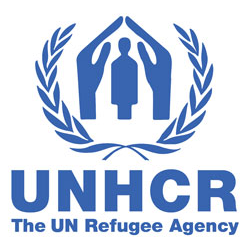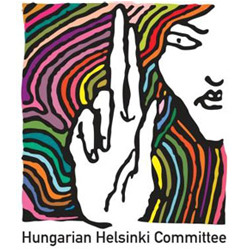Main Debate
- Are the ‘safeguard’ provisions in readmission agreements sufficient?
Main Points
Objectives of readmission agreements:
- EU seeking to use readmission agreements to guarantee removal of irregular migrants, including those who have merely transited through other contracting party
- Rules on proof and presumptive evidence for nationality and transit route
- Safe guard clauses
EU Documents
- Agreement between the European Union and Turkey on Readmission of Persons Residing without Authorisation, 16 December 2013.
- Agreement between the European Union and Georgia on Readmission of Persons Residing without Authorisation, OJ L 52, 25 February 2011.
- European Commission, Communication to the European Parliament and the Council: An Evaluation of EU Readmission Agreements, COM (2011) 76 final, Brussels, 23 February 2011.
- Agreement between the European Union and Pakistan on the readmission of persons residing without authorisation, L 287/50, 7 October 2010.
- Agreement between the European Community and Ukraine on the readmission of persons, OJ L 332/48, 12 December 2007.
- Agreement between the European Community and Bosnia and Herzegovina on the readmission of persons residing without authorisation, OJ L 334/65, 19 December 2007.
- Agreement between the European Community and the Republic of Montenegro on the readmission of persons residing without authorisation, OJ L 334, 18 September 2007.
- Agreement between the European Community and the Former Yugoslav Republic of Macedonia on the readmission of persons residing without authorisation, OJ L 334, 19 December 2007.
- Agreement between the European Community and Serbia on the readmission of persons residing without authorisation, OJ L 334/45, 8 November 2007.
- Agreement between the European Community and the Republic of Moldova on the readmission of persons residing without authorisation, OJ L 334, 22 November 2007.
- Agreement between the European Community and the Russian Federation on readmission, OJ L 129/38, 19 April 2007.
- Agreement between the Democratic Socialist Republic of Sri Lanka and the European Community on the readmission of persons residing without authorization, OJ L 124/43, 3 March 2005.
- Agreement between the Republic of Albania and the European Community on the readmission of persons residing without authorisation, OJ L 304/14, 7 November 2005.
- Agreement between the European Community and the Macao Special Administrative Region of the People’s Republic of China on the readmission of persons residing without authorisation, OJ L 143/97, 21 April 2004.
- Agreement between the Government of the Hong Kong Special Administrative Region of the People’s Republic of China and the European Community on the readmission of persons residing without authorisation, OJ L 17/23, 17 December 2003.
Readings
Core
- J. Cassarino, Readmission Policy in the European Union, Study , PE 425.632, 2010.
- M. Schieffer, ‘Readmission and Repatriation of Illegal Residents’, in B. Martenczuk and S. van Thiel, Justice, Liberty and Security: New Challenges for EU External Relations’ (Brussels: VUB Press Brussels, 2008).
- M. Pannizzon, ‘Readmission Agreements of EU Member States: A Case for EU Subsidiarity or Dualism?’, Refugee Survey Quarterly, vol. 31, no. 4 (2012), pp. 101-133.
- M. Giuffré, ‘Readmission Agreements and Refugee Rights: From a Critique to a Proposal’, Refugee Survey Quarterly, vol. 32, no. 3 (2013), pp. 79-111.
Extended
- J. Cassarino (ed.), ‘Unbalanced Reciprocities: Cooperation on Readmission in the Euro-Mediterranean Area’, (Washington: The Middle East Institute, 2010).
- A. Roig & T. Huddleston, ‘EC Readmission Agreements: A Re-evaluation of the Political Impasse’, European Journal of Migration and Law, vol. 3 (2007), pp. 362–387.
- N. A. Abell, ‘The Compatibility of Readmission Agreements with the 1951 Convention relating to the Status of Refugees’, International Journal of Refugee Law, vol. 11, no. 1 (1999), pp. 60–83.
- C. Billet, ‘EC Readmission Agreements: A Prime Instrument of the External Dimension of the EU’s Fight against Irregular Immigration. An Assessment after Ten Years of Practice’, European Journal of Migration and Law, vol. 12 (2010), pp. 45–79.
- D. Bouteillet-Paquet, ‘Passing the Buck: A Critical Analysis of the Readmission Policy Implemented by the European Union and its Member States’, European Journal of Migration and Law, vol. 3 (2003), pp. 359–377.
- I. Kruse, ‘EU Readmission Policy and its Effects on Transit Countries – The Case of Albania’, European Journal of Migration and Law, vol. 8 (2006), pp. 115–142.
- M. Schieffer, ‘Community Readmission Agreements with Third Countries – Objectives, Substance and Current State of Negotiations’, European Journal of Migration and Law, vol. 3, no. 3 (2003), pp. 343–357.
Editor’s Note
Readmission agreements will apply to rejected asylum seekers and to people removed to supposedly safe third countries and safe countries of origin. But it must be questioned whether readmission agreements concluded by the EC to date do contain adequate safeguards to ensure that people in need of international protection are not returned to persecution.



